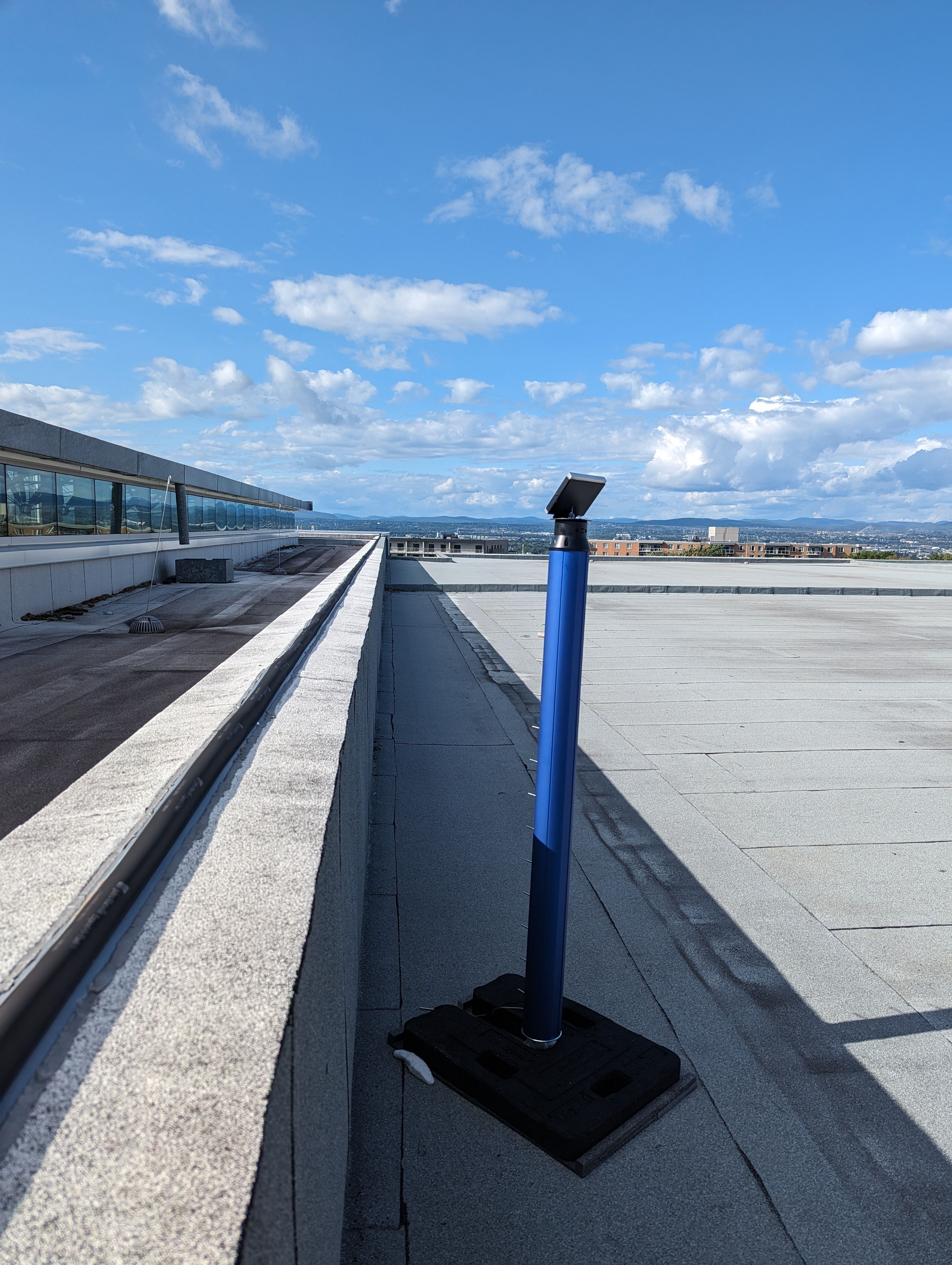
 Article
Article

This document presents the results of a case study conducted in collaboration with a national building consultant managing a portfolio of over 4500 buildings in Canada. The primary objective of this study was to assess the impact of a proactive maintenance program using Domely Connect , an intelligent roof monitoring device, on the effectiveness of proactive roof management.
The study was based on a comparative analysis of data collected in 2020, before the implementation of the program, and in 2021, after the integration of the preventive maintenance program allowing remote inspections and snow load monitoring using Domely Connect . Further, data from academic publications, insurance partners and news reports supplement the analysis by providing insights into claims and events outside the partner's portfolio.
Two key indicators were selected for this comparison: the number of service calls and snow removal costs.
Note that the total snow fall between the 2 years for the regions where the customers were located was similar, with a difference of about 3.5 inches.
Data analysis¹ revealed significant results in favor of proactive roof management supported by Domely Connect :
The case study corroborates the findings of Public Safety Canada in its report " Emergency Management Strategy for Canada: Towards a Resilient 2030 ," which states:
The return on investment of proactive risk prevention/mitigation measures would generate a six dollar savings for every dollar invested.
Shifting from a reactive approach, where problems are addressed after they occur, to a preventive approach, where damage is anticipated and prevented, yields considerable benefits.
It is estimated that that a shocking 80% of commercial roofs are prematurely replaced due to preventable problems , highlighting the immense financial burden of neglecting roof maintenance. This reactive approach, characterized by addressing issues only after they manifest, often results in more extensive damage, higher repair costs, and potential business disruptions.
Data from a 15-year study conducted by Firestone Building Products and ProLogis, a leading provider of distribution facilities, reveals a compelling financial case for proactive maintenance. The study found that proactive roof maintenance costs an average of 14 cents per square foot annually, compared to 25 cents per square foot for reactive maintenance, representing a 44% cost increase.

Water damage, the most common consequence of roof neglect, can rapidly escalate into a major business crisis. As the roof accounts for approximately 10% of all property insurance claims, with water damage being the primary culprit in 70% of those cases, the average total claim cost reaches $15,000, according to available insurance data².
Interior repairs: Ceilings become stained, walls warp, drywall crumbles, and paint peels, creating an unsightly and unhealthy environment. Mold thrives in the dampness, posing health risks and requiring expensive remediation. Ceiling repairs alone can range from $500 to $2,500, while black water extraction can exceed $20,000 .
Operational Shutdown: Water damage often forces temporary closure, disrupting operations and halting productivity. Inventory and equipment can be damaged or destroyed, requiring replacement. Business interruption costs can equal or even surpass the expenses incurred from physical damage and loss. Business interruption claims, often tied to the speed of repairs, can be significantly impacted by disputed repair costs, further adding to financial losses.
Punctures and tears caused by foot traffic, dropped tools, and HVAC or other equipment installations can also puncture or tear the roof membrane, compromising its ability to keep water out.

In emergency situations, such as critical snow accumulation, large teams must be rapidly deployed to remove snow before structural damage or roof collapse occurs. This large-scale mobilization, sometimes involving up to 25 people or more, increases the risk of accidents, equipment damage, and potential harm to the roof itself. Clearing snow from a large commercial flat roof during a crisis becomes a complex and costly undertaking, demanding significant resources and careful coordination:
During emergencies, most certified roofers are unavailable. You may have to settle for whatever workers are available, even if they are not the most qualified, increasing the risk of further damage to your roof.

In short, proactive roof management translates into:
Investing in prevention is an investment in the safety, durability, and profitability of your building.

 Article
Article

 Article
Article

 Article
Article
Want a quote or have questions? Would you like to better understand how our smart offering and unique data can help you?